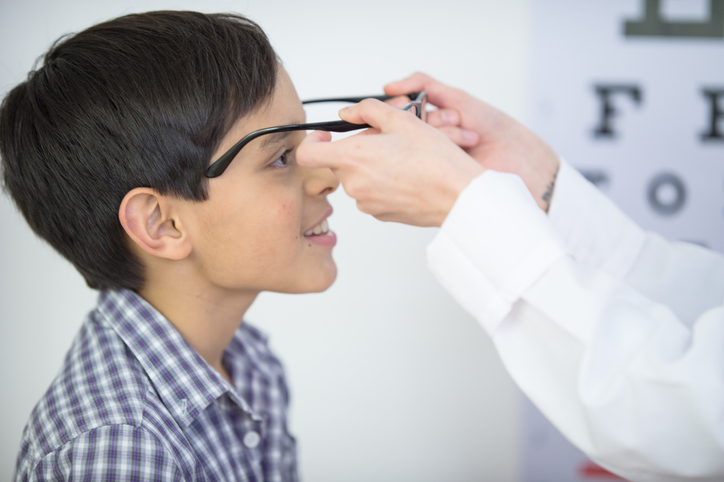 |
|
Attending to the refractive needs of patients with cortical vision loss can significantly improve quality of life. Photo: Getty Images. Click image to enlarge. |
Cerebral visual impairment (CVI) is the leading cause of bilateral vision problems in children from developed countries, yet a new study conducted at the Cincinnati Children's Hospital Medical Center found that 10% of kids with this condition weren’t prescribed glasses even though they had refractive error that warranted correction. Considering prescribing patterns in this pediatric population, children with less severe CVI weren’t as likely to have significant refractive error, but they were still given glasses, while children with more severe CVI weren’t prescribed glasses, despite having notable refractive error. The latter group had other complicating factors including an inability to tolerate glasses.
“In our practice, children with very low visual functioning were not prescribed glasses as often, possibly limiting their visual rehabilitation,” the researchers wrote in their paper. “Changes should be implemented to ensure that all children with CVI with refractive error are correctly being prescribed glasses to provide the best possible visual outcome.”
In their effort to determine prescribing and visual rehabilitation referral trends, they conducted a retrospective chart review of 194 children with CVI who were examined at their facility from 2008 to 2018. Of the participants, 68 (35%) had refractive error warranting correction and were prescribed glasses, 99 (51%) didn’t have refractive error warranting correction and were not prescribed glasses, 20 (10%) had refractive error warranting correction but weren’t prescribed glasses and seven (4%) didn’t have refractive error warranting correction but were prescribed glasses.
The authors found over a one-line Snellen equivalent difference between the children with refractive error who were (20/156) and weren’t prescribed glasses (20/221). Additionally, they noted a more than six-line Snellen equivalent difference between the kids without refractive error who were (20/35) and weren’t prescribed glasses (20/149). The CVI range for each of the four groups was 5.9, 4.6, 4.8 and 7.1, respectively.
Spectacle use may be a challenge in populations with refractive error due to several issues, including comorbidities, such as developmental delay, cerebral palsy and sensory processing disorders, the investigators explained. Still, they strongly suggested that all children with CVI be correctly prescribed glasses to provide the best possible visual outcomes.
Rice M, Sandoval MA, Castleberry KM, et al. Physician prescribing and referral patterns in children with cerebral visual impairment. Optom Vis Sci. September 21, 2021. [Epub ahead of print]. |

